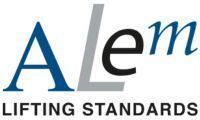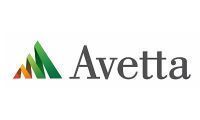- DHL Back in Action: Stertil Stokvis Engineers Complete Critical Dock Leveller Repair
- Wheel Guide Damage: Why It Happens And How To Avoid It
- How To Avoid The Hidden Costs Of Damaged Industrial Doors
- Dock Bumper Overrides: How To Container-Proof Your Loading Bay
- Loading Bay Maintenance: How to Comply with PUWER Regulations
- How Are Loading Bay Dock Levellers Maintained?
- Stertil Stokvis Loading Bay Door Repair Restores Operations After Forklift Collision
How To Avoid The Hidden Costs Of Damaged Industrial Doors
05/09/24 | News 2024
We often take our loading bay and warehouse doors for granted:
They provide security by preventing unauthorised access, reduce weather ingress, and keep operations running smoothly.
But when they don’t work, we soon discover how vital they are to our business.
Here’s what you need to know about the hidden cost of damaged doors – and the inspection and maintenance options you have to avoid unnecessary disruption and downtime resulting from door breakdowns:
RECOGNISE THE FINANCIAL IMPACT
Door breakdowns come with a cost – and it’s important to be up front about this, as it helps your business to prioritise maintenance, prevent unexpected expenses, and maintain smooth operations.
Breakdown costs you should consider:
- Repair and replacement – minor issues quickly escalating into major problems.
- Repetitive root causes – issues that could be managed more effectively if properly identified.
- Operational downtime – disruption to the flow of goods, resulting in lost revenue.
- Energy losses – poorly sealed or damaged doors causing energy loss, driving up your heating or cooling expenses.
All these costs can quickly add up, but they’re not the only challenge your business may face in the event of a door breakdown.
UNDERSTAND THE OPERATIONAL AND SAFETY COSTS
It goes without saying that a damaged door means your premises could run the risk of business disruption.
A faulty door is more likely to be unsafe and unreliable.
This, in turn, can lead to further costs for your business resulting from:
- Late deliveries and downtime
- Liability and insurance costs
Related to this are important safety concerns: Workplaces must comply with legislation such as PUWER.
This requires power operated industrial doors like overhead sectional doors and high-speed doors to be ‘maintained in an efficient state, in efficient working order and in good repair’.
In simple terms, this means that employers must ensure industrial doors are safe to operate.
Safety costs include:
- Employee safety – hazardous working conditions can lead to potential injuries.
- Compliance issues – failing to maintain safe and functional doors, resulting in fines or legal action.
So if you want to avoid the combined costs of door breakdowns, you need to understand their current condition and put together a plan for proactive maintenance.
CHECK FOR WEAR AND TEAR
Some signs of damage may be obvious, but it’s still essential to regularly inspect your industrial doors for possible wear and tear.
Common visual checks include evidence of impact damage or warning light indicators.
Operational red flags might include unusual noises during operation, slow response times, or difficulty in opening and closing the doors.
For overhead sectional doors, frequent use and exposure to harsh conditions can lead to specific faults:
- Damaged or misaligned tracks
- Worn or broken rollers
- Damaged panels
- Faulty or worn cables
- Incorrect counter-balance mechanisms
Regular visual inspections can help catch these early signs before they develop into more serious issues.
PERFORM REGULAR INSPECTIONS
To keep your doors in optimal condition, a routine inspection schedule is crucial.
Generally, it's recommended to perform basic inspections monthly or quarterly, depending on how frequently the doors are used and the environmental conditions they face.
Importantly, professional inspections should be conducted at least once a year—or more frequently in high-traffic areas—to ensure that any underlying issues are identified and addressed.
WORK WITH A MAINTENANCE SPECIALIST
It may be tempting to perform inspections and undertake any repairs inhouse.
But unless you’re a business that specialises in servicing and maintenance, you’re unlikely to have necessary knowledge and experience to do this safely and effectively.
Additionally, under the PUWER regulations inspections and maintenance should be carried out by a ‘competent person’.
This means someone that has sufficient training, experience, or knowledge of industrial doors.
Realistically, given the complexity of modern door technology, only a specialist service engineer is likely to meet these requirements.
How does a service agreement work?
Our fully tailored service packages are designed to meet your exact usage and budget needs, with full-service or compliance-only contracts available for fixed-term periods.
For inspections of industrial doors, you can expect:
- Expert, experienced engineers
- Detailed ‘traffic-light’ service records and condition reports
- Tailored service packages
LOOKING TO AVOID THE COST OF DOOR BREAKDOWNS?
With a network of over 40 factory trained engineers and emergency callouts available 24/7, we’re trusted to carry of industrial door repairs across the country.
So if you’re looking to avoid the hidden costs of damaged industrial doors, you can find out more about our services here – or contact our service experts via our contact page.
Contact Stertil Stokvis on 0870 770 0471, option 2, option 4, or email helpdesk@stertil.co.uk.






